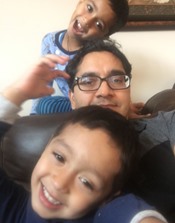Program Information
Radiobiological Modeling of Tumor Control Probability (TCP) and Radiation-Induced Pneumonitis (RP) for Lung Cancer Patients Treated with Monte Carlo-Based Lung SBRT
D Pokhrel*, S Sood , X Shen , R Badkul , C McClinton , H Jiang , M Mitchell , C Lominska , F Wang , University of Kansas Hospital, Kansas City, KS
Presentations
WE-H-BRA-2 (Wednesday, August 3, 2016) 4:30 PM - 6:00 PM Room: Ballroom A
Purpose:To present radiobiological modeling of TCP using tumor size-adjusted BED(s-BED)and PTV(D99) to lung SBRT patients treated with X-ray Voxel Monte Carlo(XVMC) algorithm, apply parameterized Lyman-NTCP model to predict grade-2 RP and subsequently, compare with clinical outcomes/observations.
Methods:Dosimetric parameters and clinical follow-up for XVMC-based lung-SBRT patients were retrospectively evaluated.Patients were treated at Novalis-TX with hybrid(2 non-coplanar partial-arcs plus 3-6 static-beams)plan using HD-MLC/6MV-SRS-beam.For TCP,s-BED modelling was utilized: TCP=EXP[sBED-TCD50]/k/(1.0+EXP[sBED-TCD50]/k), where k=31Gy corresponding to TCD50=0Gy and s-BED was defined as BED10 minus 10 times the tumor diameter(in centimeters)by Ohri et al.(IJROBP,2012). For 2-yr local-control,we used more-realistic MC-computed PTVD99 as a predictive parameter,s-BED(D99).Due to relatively shorter median follow-up interval(12-months),Kaplan-Meier curves were generated to estimate 2-yr observed local-control and compared to predicted-rate by TCP modeling. For NTCP,we employed parameterized Lyman-NTCP model utilizing normal-lung DVH and α/β=3Gy fitted to predict grade-2 RP after lung-SBRT.
Results:Total 108 patients (137 tumors) treated for 35-70Gy in 3-5 fractions,either primary-lung(n=74)or metastatic-lung(n=53)tumors were included.For the given prescription dose with MC-computed MUs, 2-yr local-control rates with s-BED(D99) was 87±8%. Kaplan-Meier generated observed local-control rate at 2-yr was 87.5%,suggesting that PTV(D99) could be a potential predictor (p-value=0.38). Observed vs predicted TCP for primary-lung tumors and metastatic tumors were 97% vs 88±7% and 94% vs 86±9%.NTCP model predicted well for symptomatic-RP with predicted vs observed (3±5% vs 2%). Radiographic and clinically significant RP was observed in 13% and 2% of patients. Higher rates of radiographic change were observed in patients who received >50Gy compared to ≤50Gy(24% vs 10%).
Conclusion:Utilizing MC–computed PTVD99, our TCP results were well correlated with clinical outcome. The predicted grade-2 RP rate was comparable to clinical observations. Clinical application of these radiobiological models may potentially allow for target dose escalation and/or lung-toxicity reduction. Further validation of these radiobiological models with longer follow up interval for large cohorts of lung-SBRT patients is anticipated.
Contact Email:

